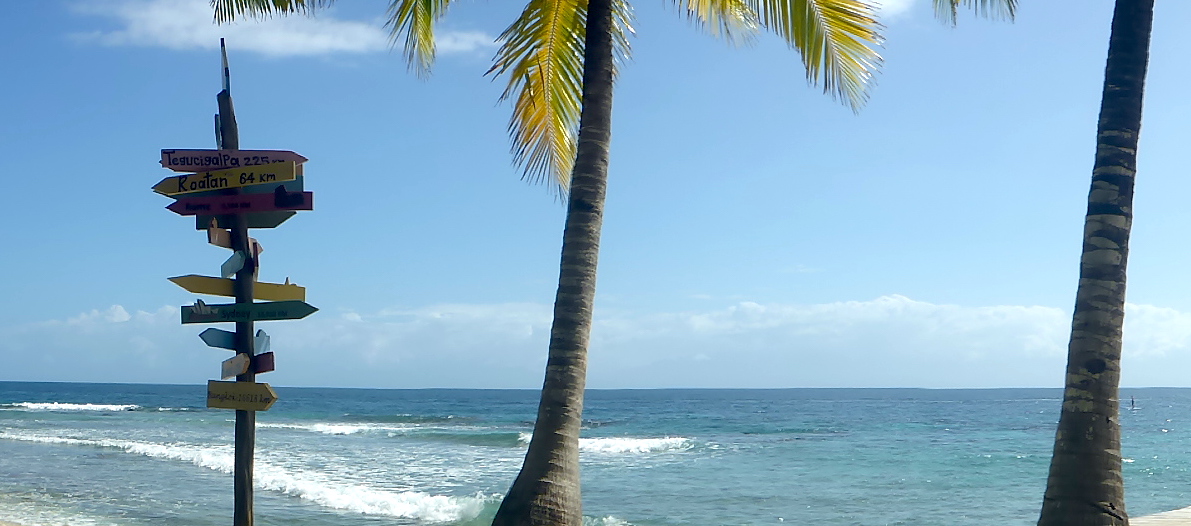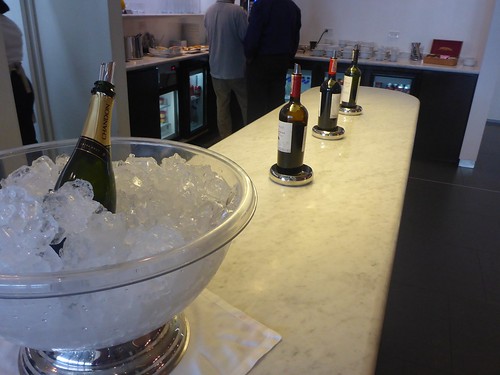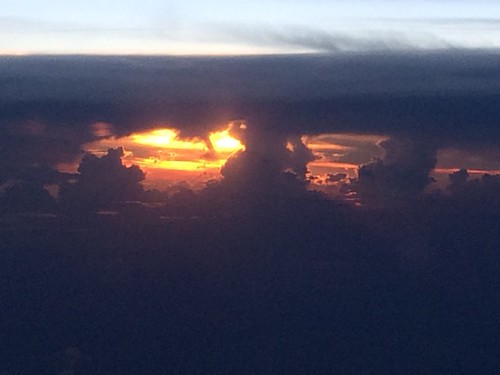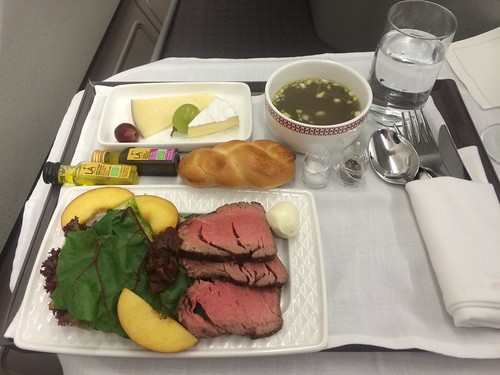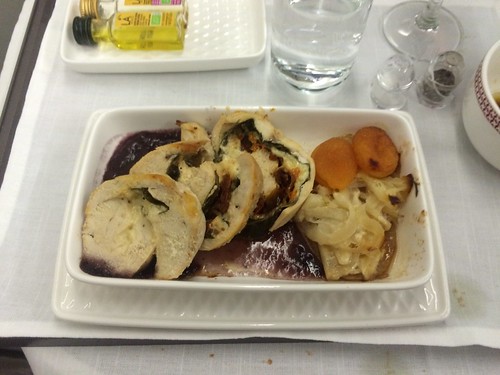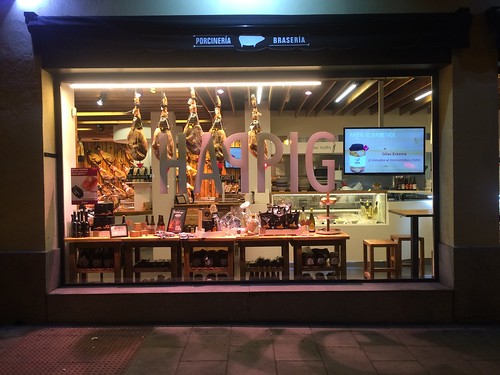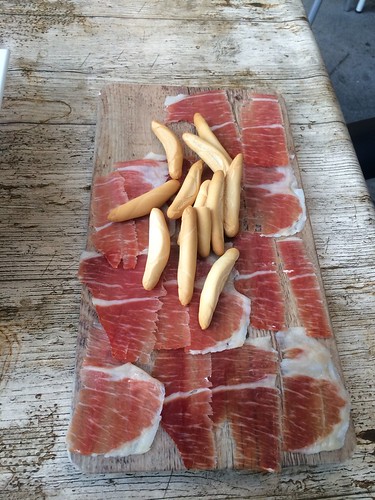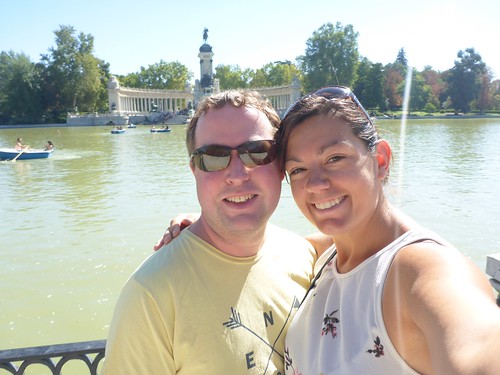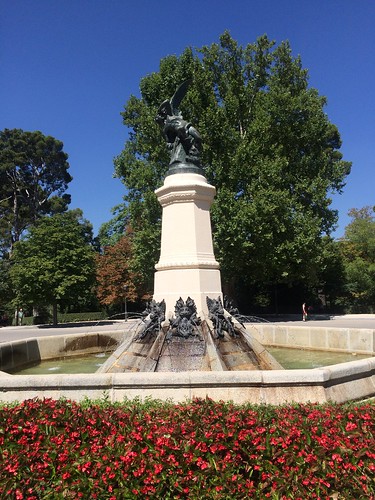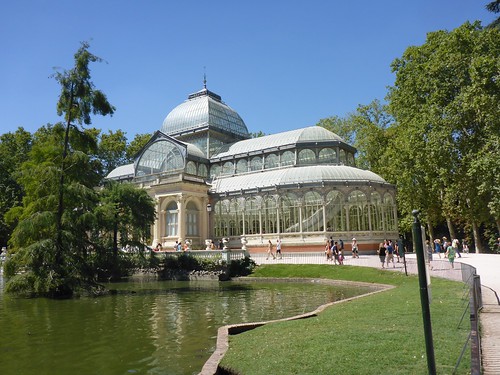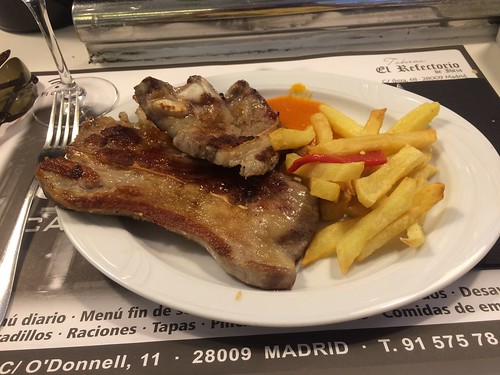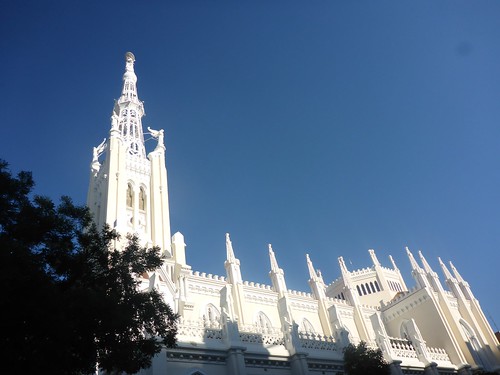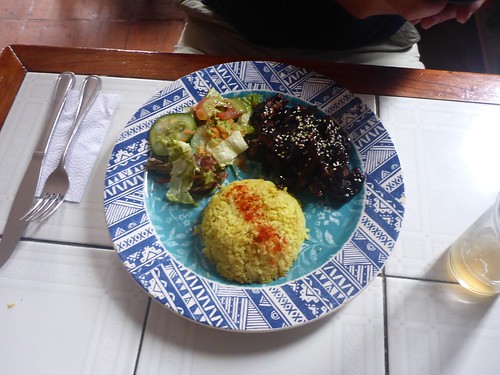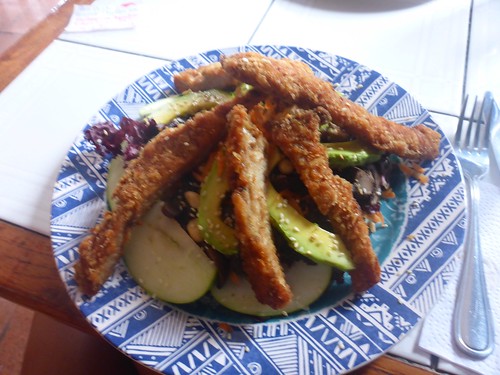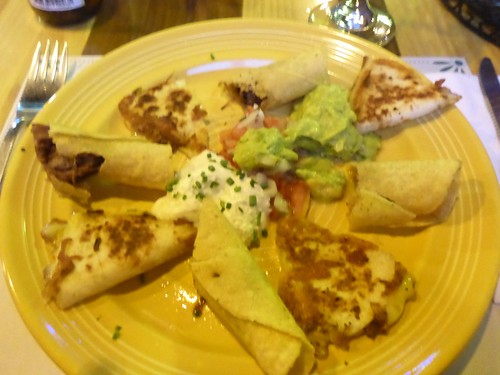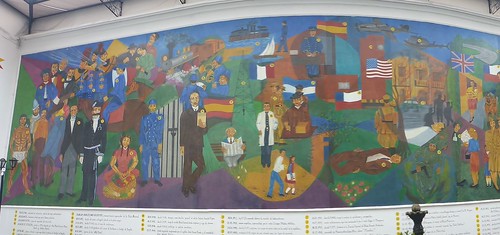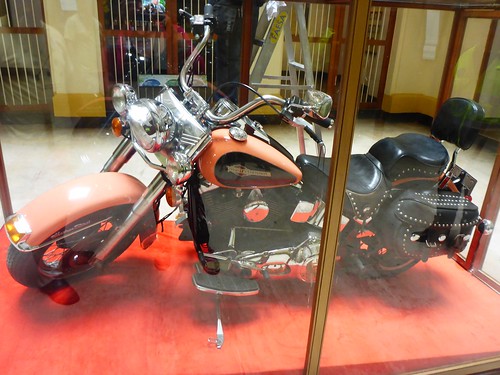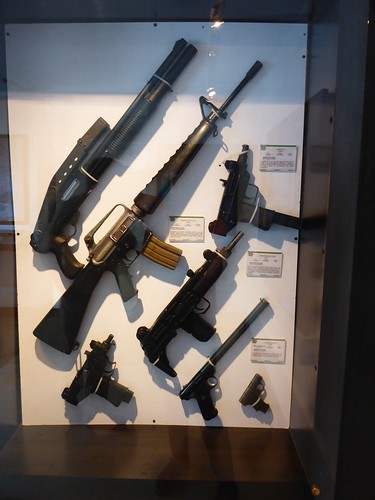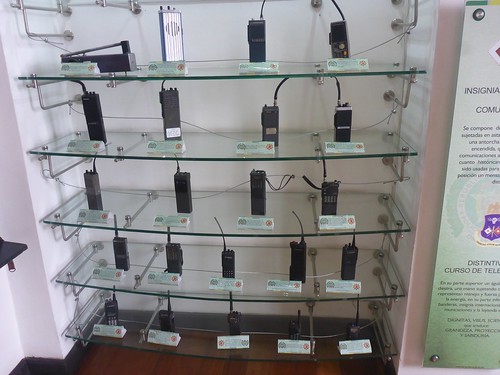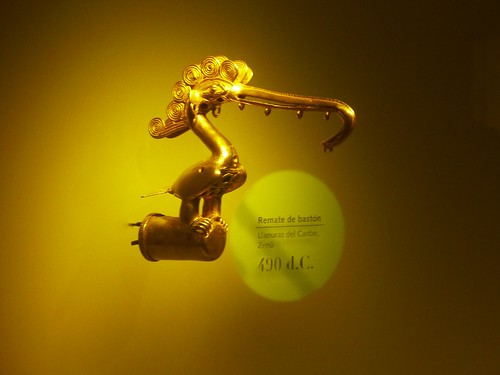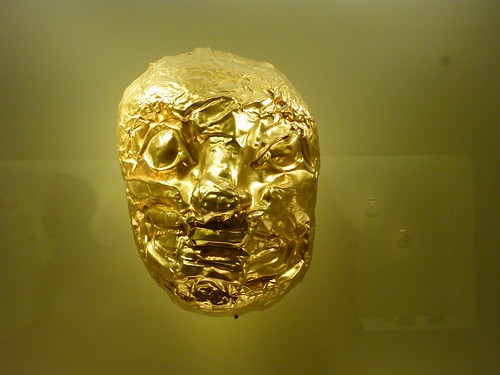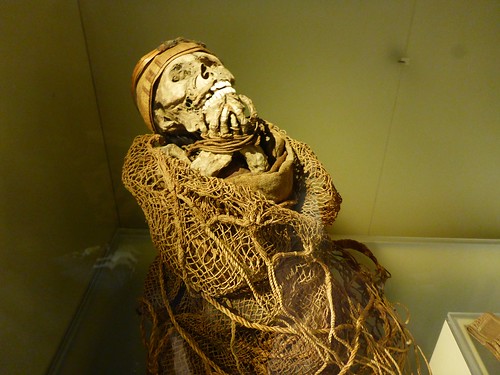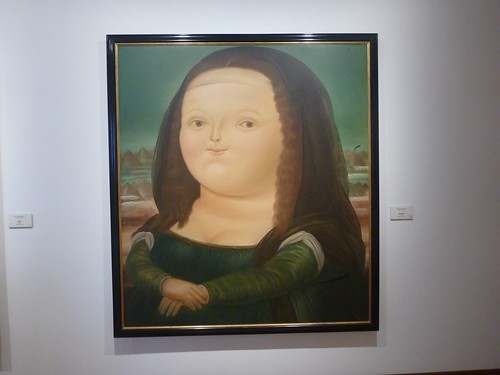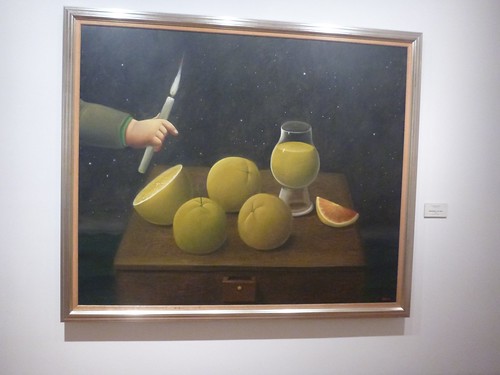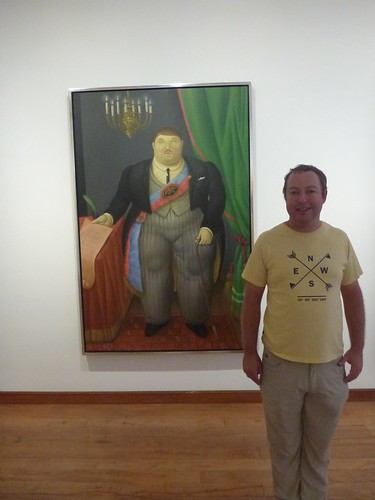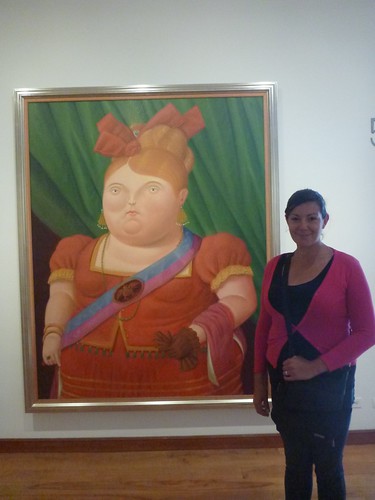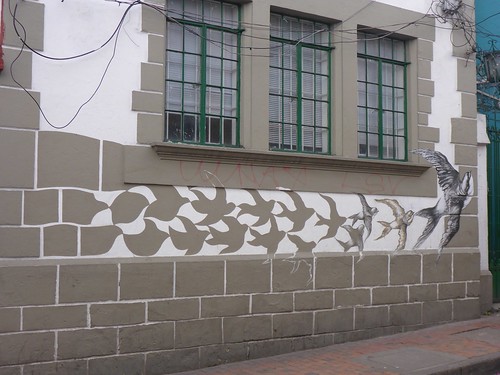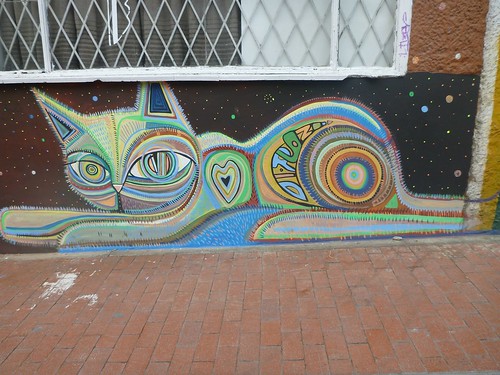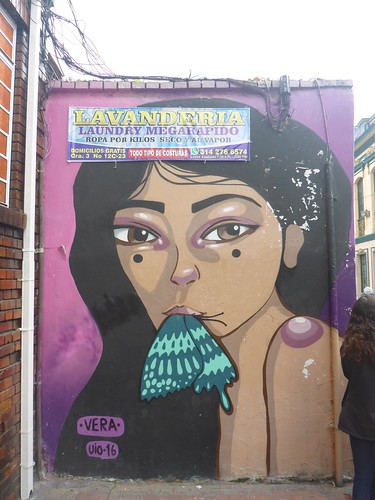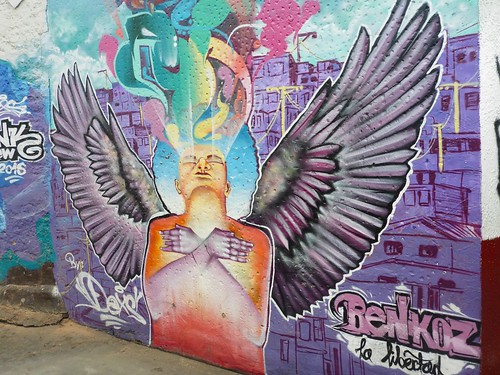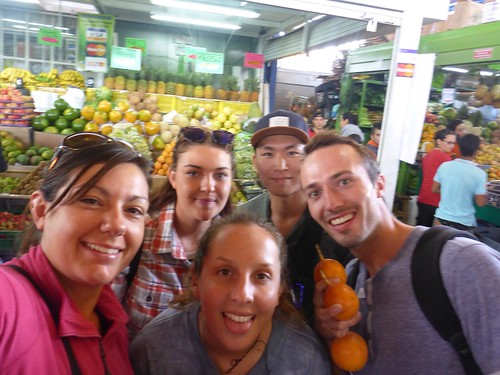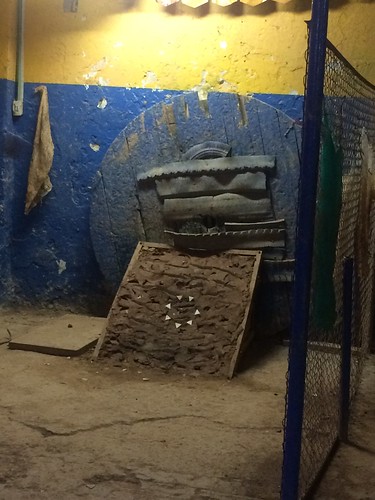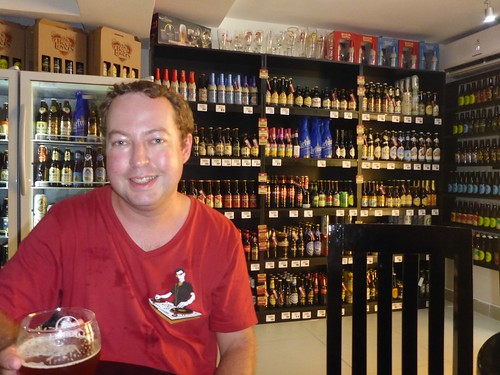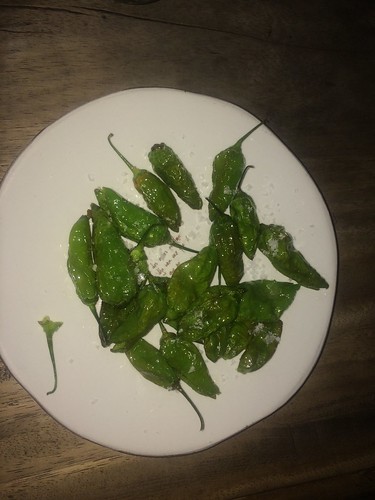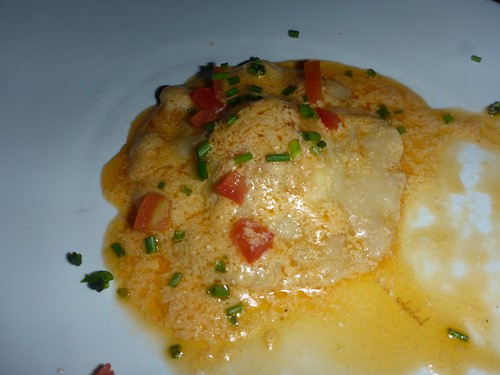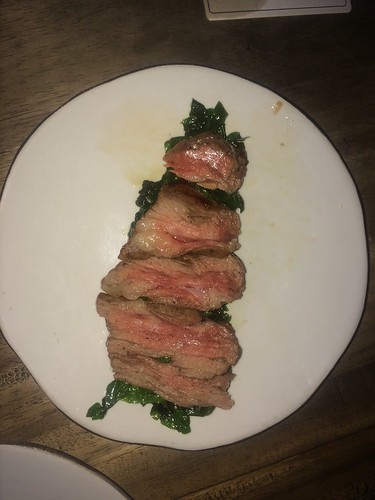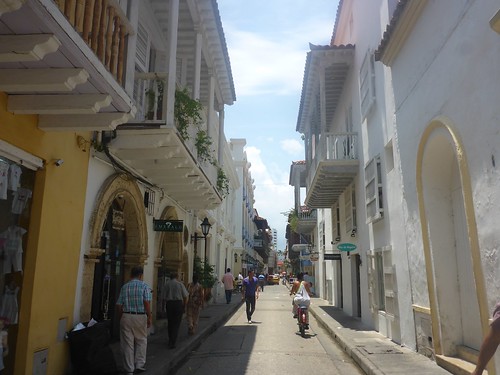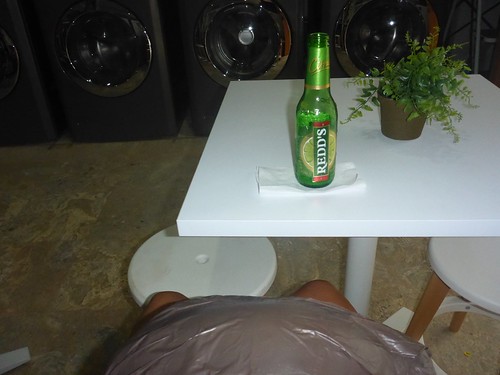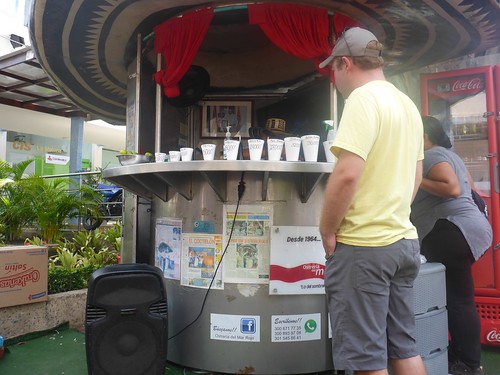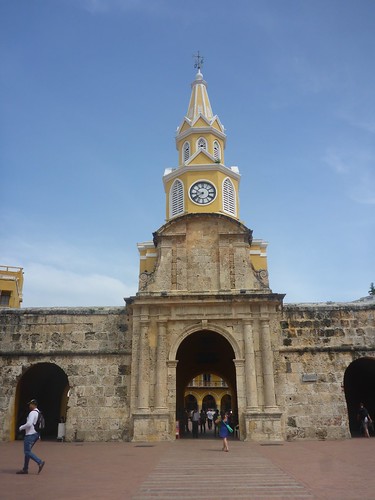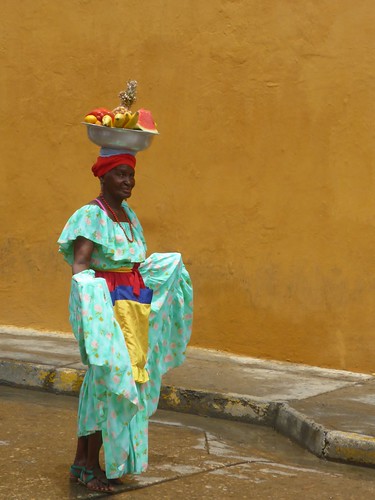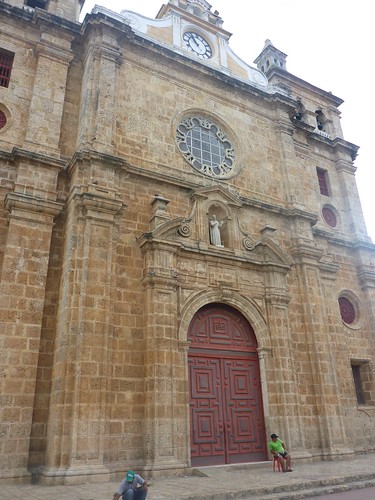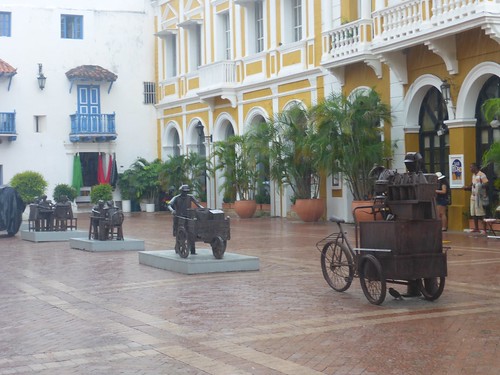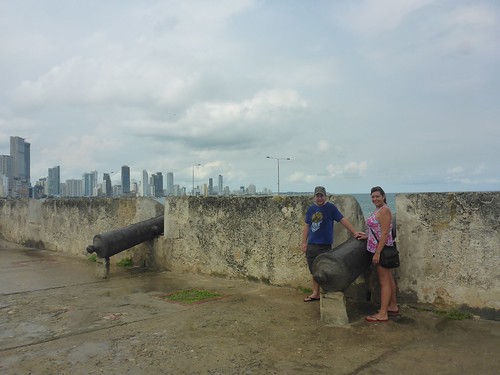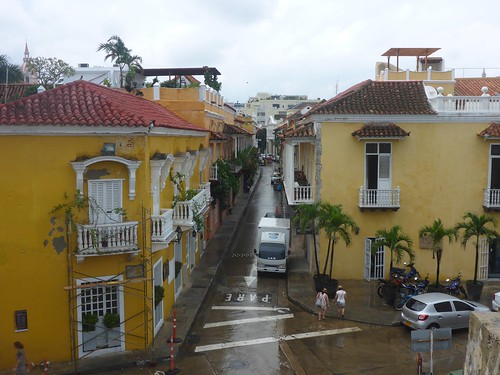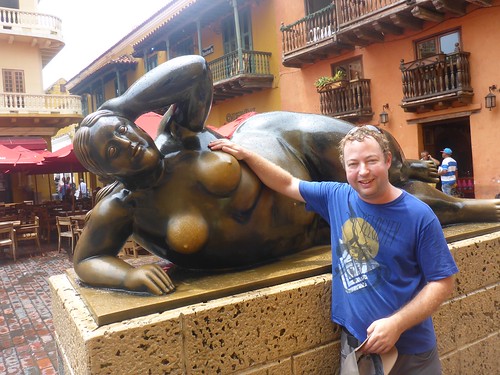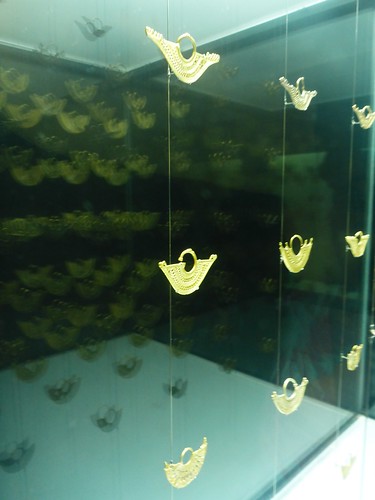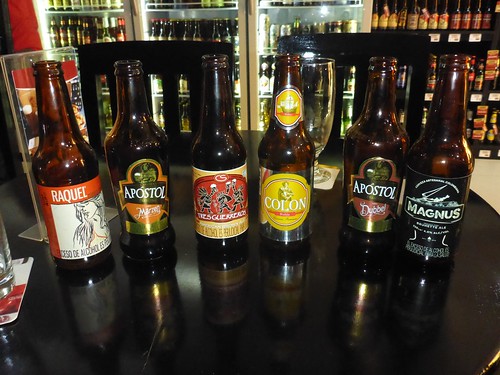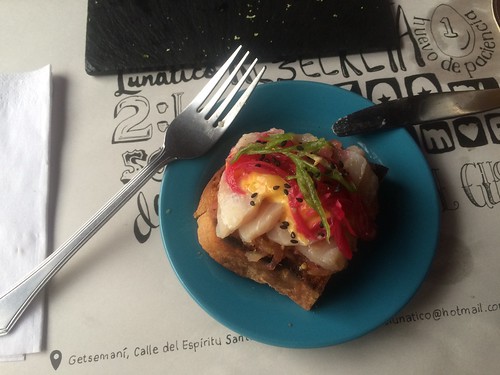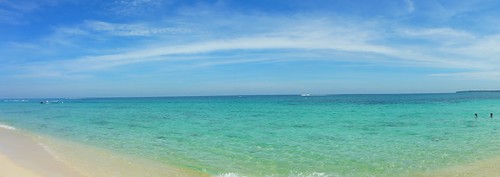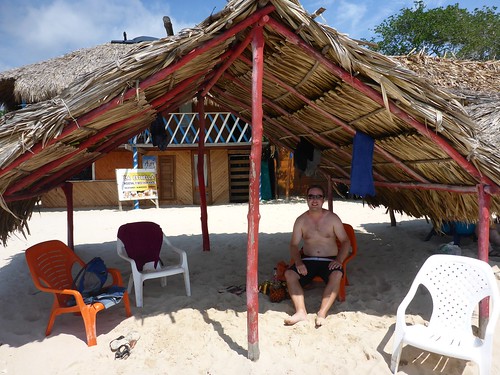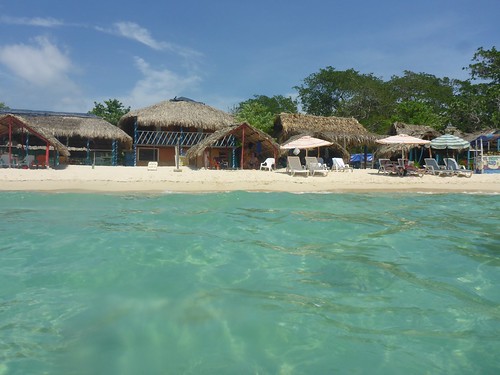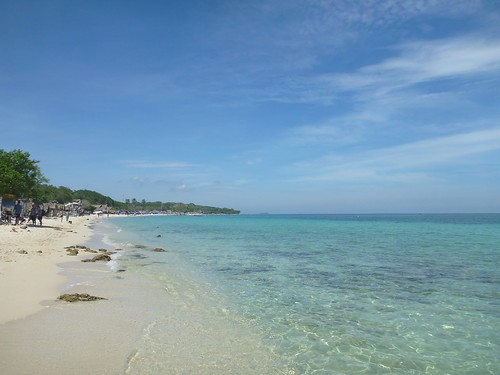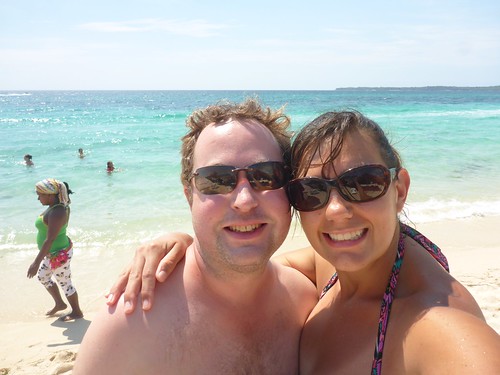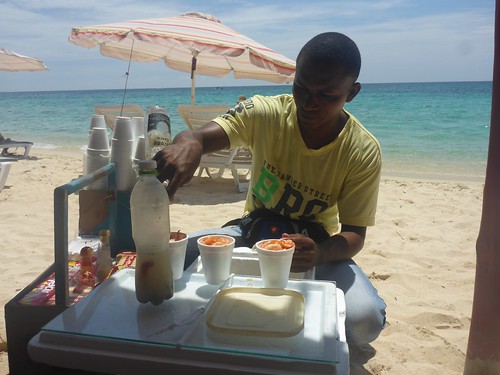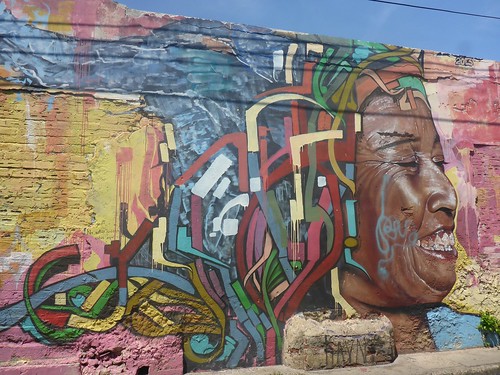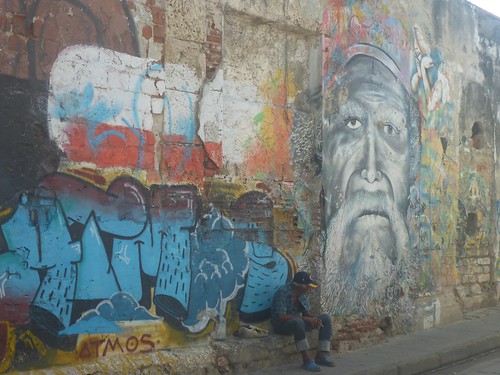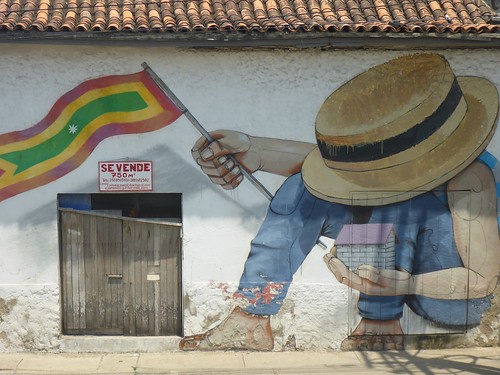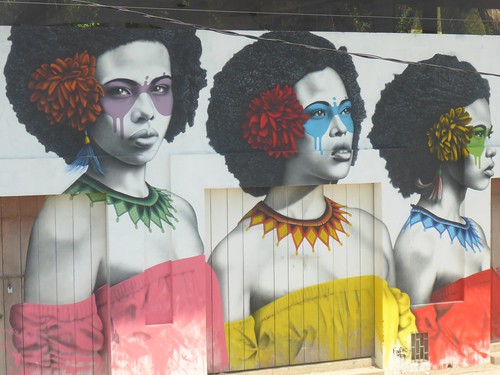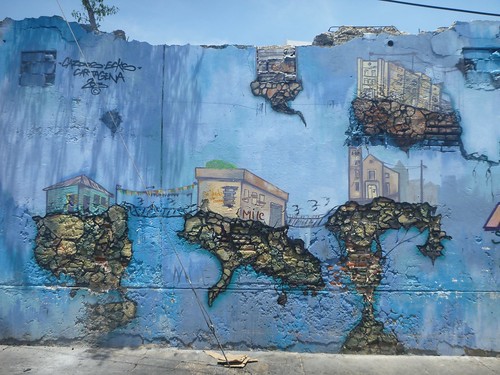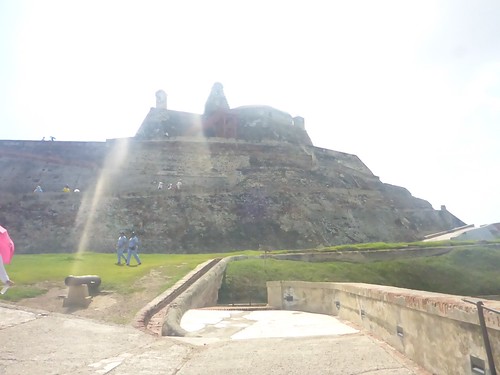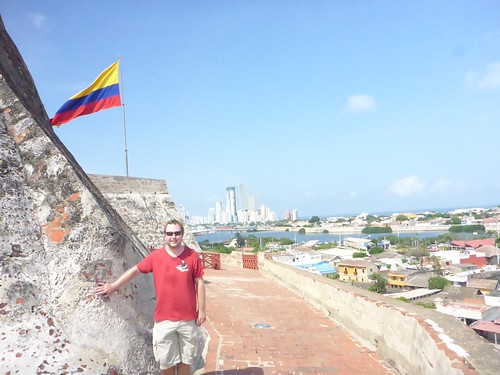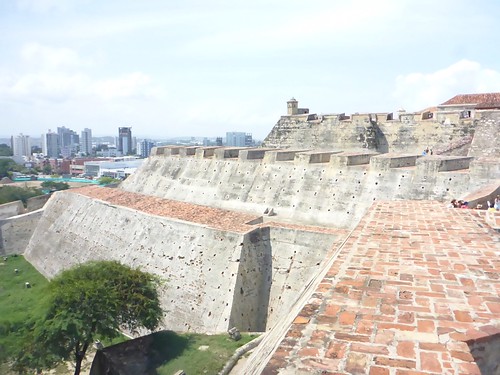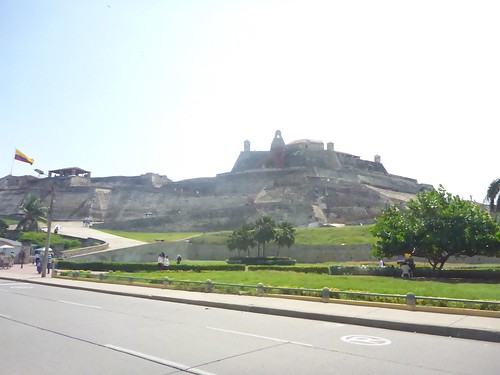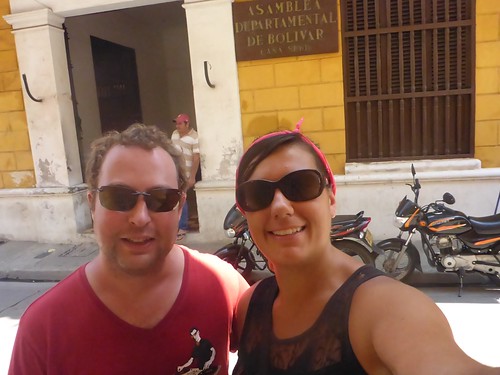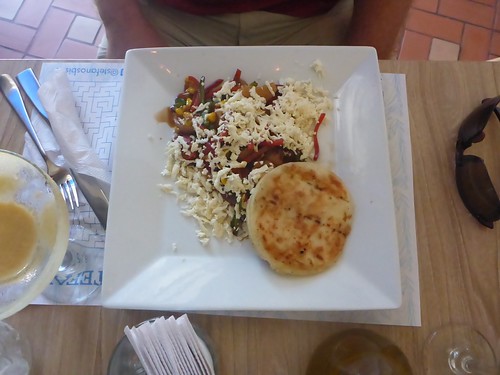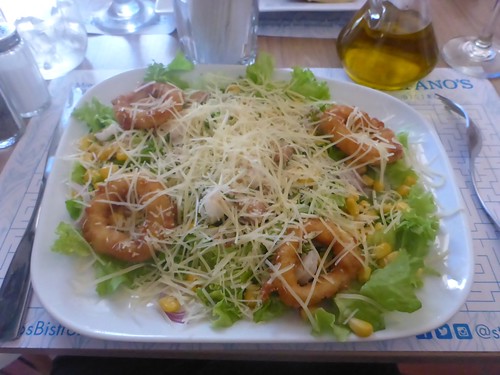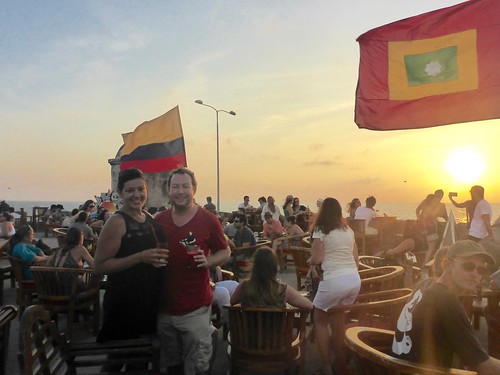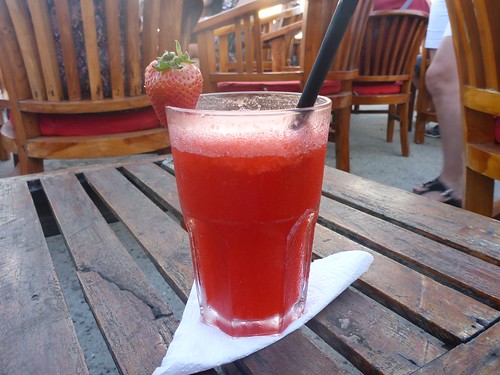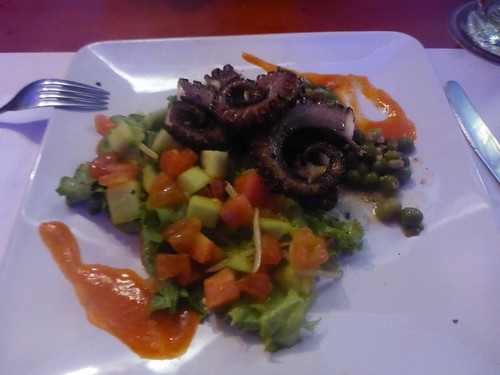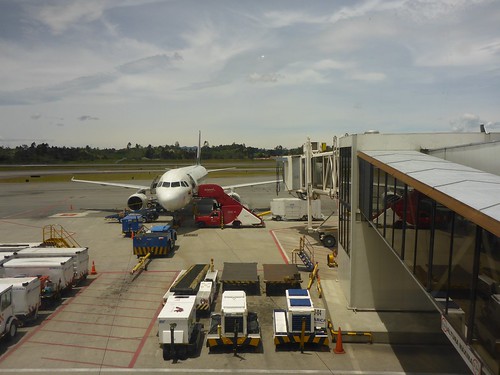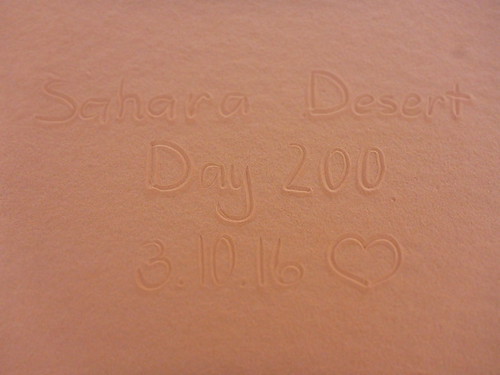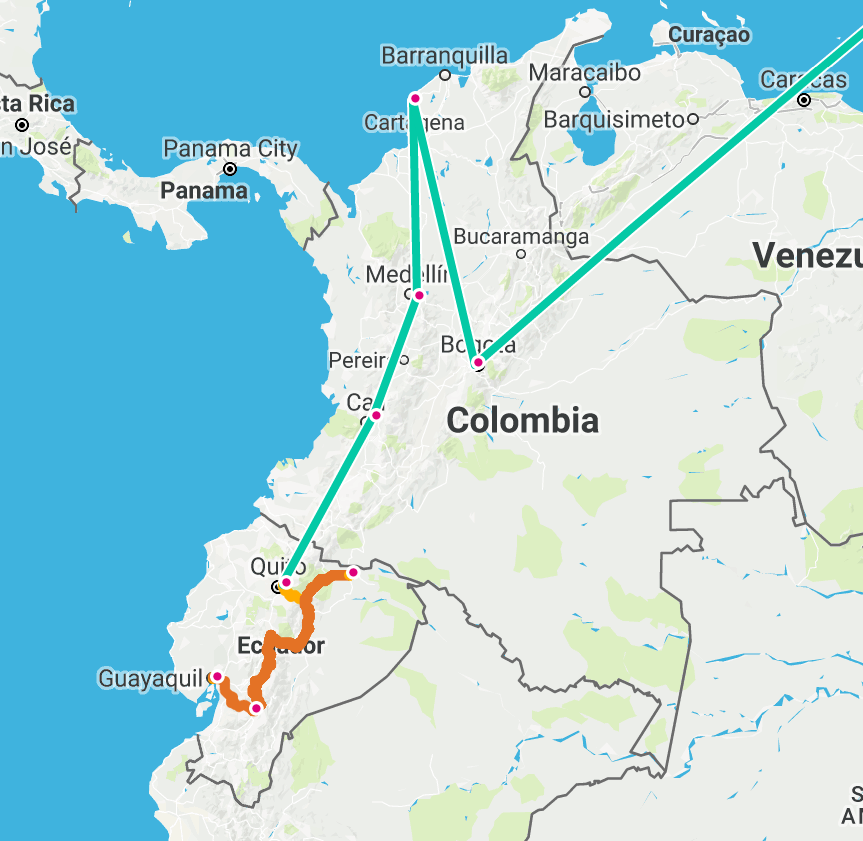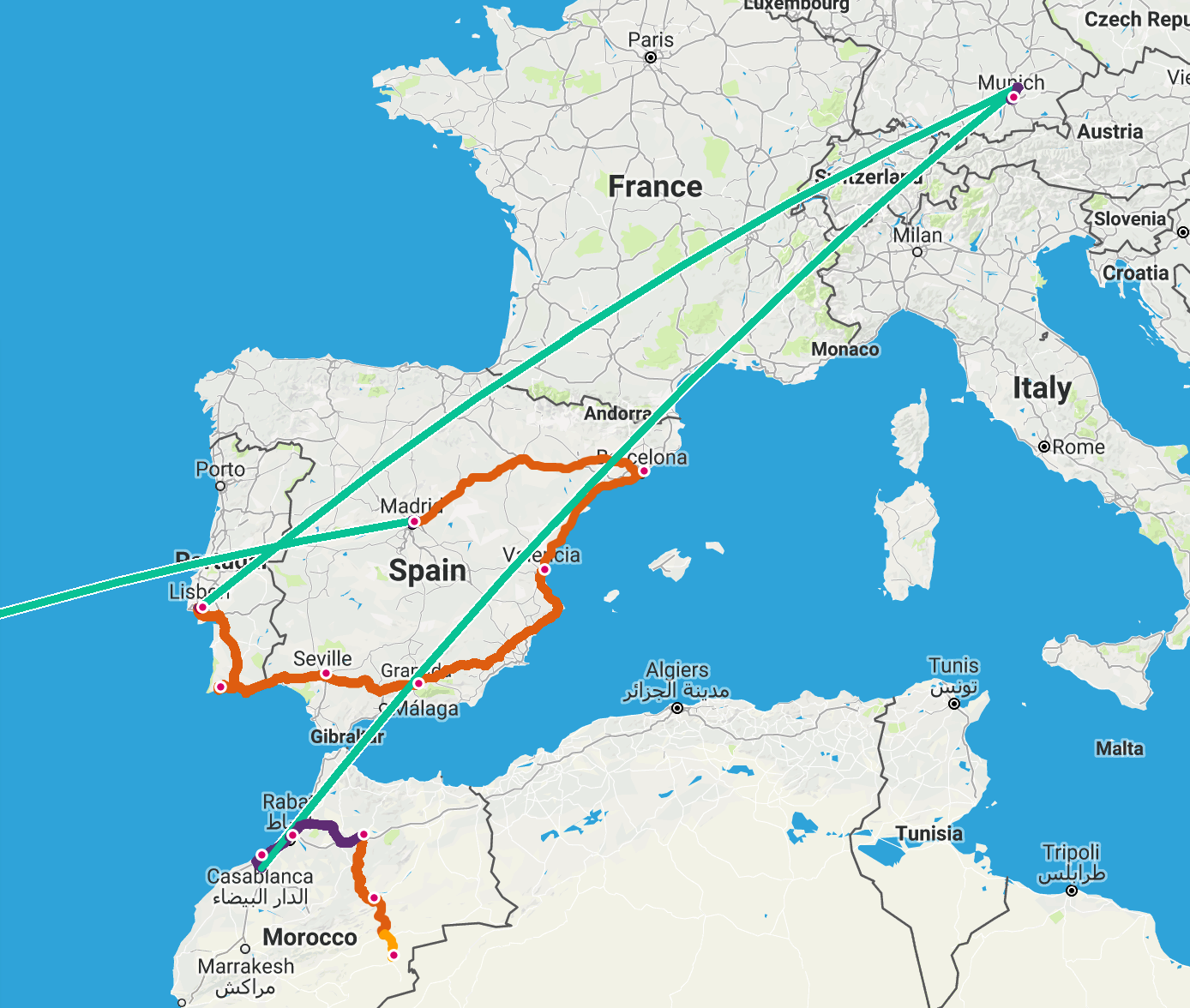Medellin, what was previously the most dangerous city in the world and one of the many homes of Pablo Escobar, is now one of the best cities to live in South America and filled with a wonderful sense of pride from the locals.
Colombia as a whole was regularly in the news in the late 80’s and early 90’s, for terrible things. This means that when the country Colombia is mentioned to someone there is usually a response about something to do with Escobar, or the Miss World/Universe pageants. In reality, there is so much more to Colombia, and particularly to Medellin!
Due to some of the “do not travel” warnings the Australian Government had listed while we were organising our trip into Colombia, we were unable to travel overland between cities because our insurance wouldn’t cover us, so we unfortunately had to fly (instead of taking an 8-10 hour bus). We’d arrived into Medellin and then spent an hour in the taxi to get to our hostel in Floresta and then out to a Mexican restaurant for dinner. We’d decided to stay a little way away from the main backpacker area due to our dwindling money situation… this was a good idea in hindsight!
Planning and stuff… again!
It seems on our trip that we are forever planning; however, it is important to note that pretty much every city we’ve been in, there are a million things to do and just not enough time to do it all. We’d decided for Medellin that we wanted to go on one of the Escobar tours to learn about the cartels, a trip out a place with a giant rock with a boat cruise, a look at the telefericos and a trip over to a few microbreweries (we can all see where this is going to end up, right?).
After planning out our week and getting organised, we thought we’d ask for the assistance of the reception of our hostel to book us in for a full day trip, as our Spanish over the phone isn’t amazing. We were promptly told that “there’s a phone over there, you can book it yourself”, this was not a good option, and so we went for the second option of going to the hostel that the Escobar tours are booked from, and organise the other one via WhatsApp. Unbeknownst to us, the Copa Libertadores (South American equivalent of the UEFA Cup) final was on, and we were staying less than 1km from the stadium. Coincidentally, the stadium is in the same area as the other hostel we were trying to find was. Always willing to be apart of the festivities, we decided to join in and enjoy a few beers with the locals. Knowing that football is almost a religion in South America, and being in the city where the final was held, we decided that it might be safest for us to head back to the comfort of the hostel before the end of the game - just in case Atletico Nactional (the local Medellin team) lost and the wallowing crowd took to the streets. Fortunately, they won, we could hear the stadium from the hostel and there were no riots, however the hostel definitely was the best option for us!
Trips to the big rock and the most colourful town in the world
After eventually getting ourselves organised on to a tour we were up and at ‘em at some ungodly hour Thursday morning to head to the middle of the city, where our tour was leaving at 8am. We were told to make sure we were on time as they had been known to leave people behind… the question is, is on time South American on time or the rest of the world on time? The answer, South American on time; we were there ten minutes early and didn’t get picked up until 8:30am. On the plus side, we were able to navigate ourselves on Colombia’s only metro system very easily (and for the fantastic price of AU$1). The metro is a source of pride for the people of Medellin, it has no graffiti, extremely efficient, extremely clean, very safe and always jam-packed with people no matter what time of the day.
Once the bus arrived to the main square, already half-filled with people from one of the other districts coming on our tour, we were away. We were fortunate enough to have two guides with us, one who spoke Spanish and the other English; this was excellent in theory, not so well executed in practice. The Spanish guide gave a twenty-minute synopsis of what we would be seeing and doing throughout the day, the English guide gave a two minute garble of missing information that was supposed to be a translation.
We started going up the highway, which took ages, and then about fifteen minutes past the outside of Medellin we stopped at a roadside restaurant for breakfast, which consisted of an Arepa, some Queso Campiseno (“farmers’ cheese”), and a coffee. Apparently we could get things like chorizo too (at extra cost) but this was some of the information the English-speaking guide didn’t translate from the earlier information - we would attempt to understand the Spanish version from now on.
We continued on to a small town named Maranilla where we stopped at the main plaza, unsurprisingly it was named after Simon Bolivar and had the big horse statue with him that we have come to know well. We were given a 10 minute tour of the city with almost no information, but saw a Jesuit church with a small door, and an old house with a big door so they could ride horses in. We only had 15 minutes free time, so we grabbed a mystery food bakery snack, since breakfast wasn’t filling.
After being piled back onto the bus and then having to wait for the few stragglers still running on South American time, we continued on to Peñol, which looked very new because they had moved the town. The old site was flooded as part of a hydroelectric dam. There is a “phoenix” statue in town, which is a women with the back and wings of a bird, rising from the water, representing the town being re-born. We walked up the big stone staircase to the town hall at the top and then had another 10 minutes of free time (20 minutes in South American time) before again, waiting for the stragglers and heading onward to La Piedra.
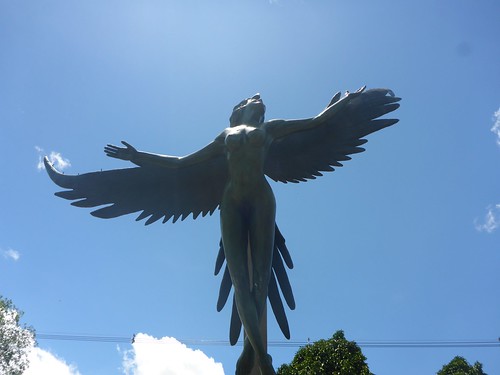
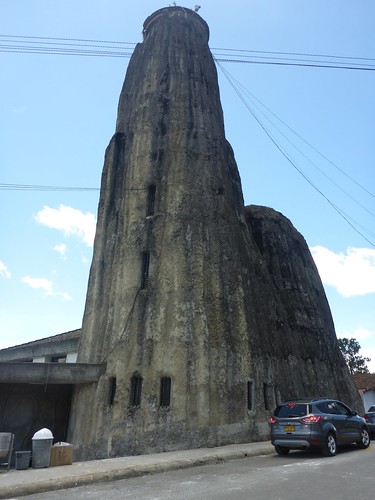
La Piedra is a massively impressive rock formation that stands over 200 metres high nearby to the Guatape town. The formation is over 70 million years old, and even with two-thirds of the formation being under ground, it still has 649 steps to get to the top. At a little over 2000 metres above sea-level we began to scale the 649 steps, in the thirty degree heat… We felt every single one of those steps on the way up, however the view at the top was definitely worth it! On a beautifully clear day there are 360 degree views from the top of the rock, and if you’re willing to pay for a drink or ice-cream at the top you can climb to the top of one of the cafés and have that view completely uninterrupted. Simply stunning!
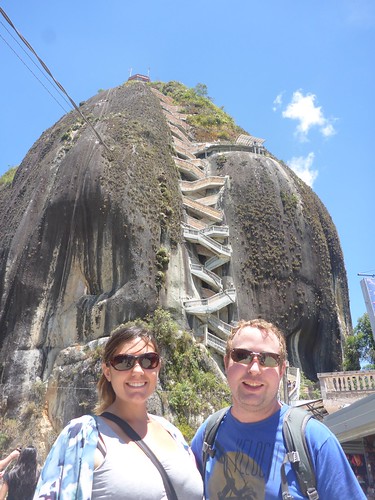

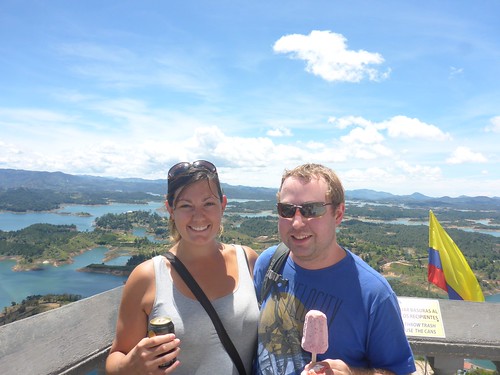
Climbing those stairs definitely built up a fair amount of hunger between us gringos; and we were promptly summoned back onto the bus where we had to hurry up and wait for the same set of stragglers, after which we headed into Guatape town for lunch. We were taken to one of the local restaurants that apparently had a very decent version of the local specialty dish “bandeja paisa” (a pork dish with rice, vegetables, fried plantains and beans). Please note the use of the word ‘apparently’.
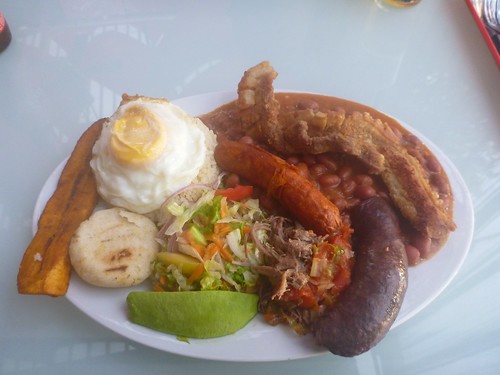
This is a proper version of Bandeja Paisa, not the bad one
After the less than impressive lunch, we were taken down to the water edge and led onto a fairly large cruiser to take a look around the stunning lake. The water is crystal clear and beautiful, the beers cold, and the company pretty good. Not a bad way to spend an hour killing time!

Returning to shore we had an hour free time to wander around the Guatape town, it is filled with colourful paintings on every house and shop, and is also one of the most important electric production centres in the whole of Colombia. Every single street, every single corner and every single house is covered with beautiful paintings depicting everyday life; the original purpose of painting the houses in such bright colours was to stop chickens pecking at walls. The artwork is just incredible.
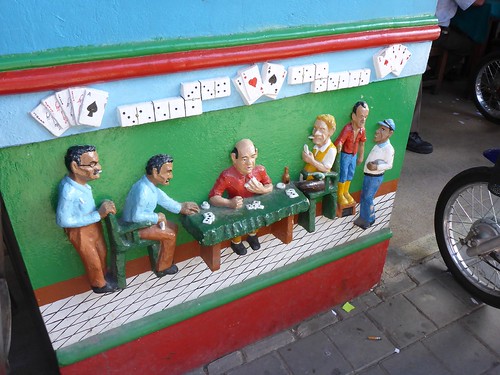
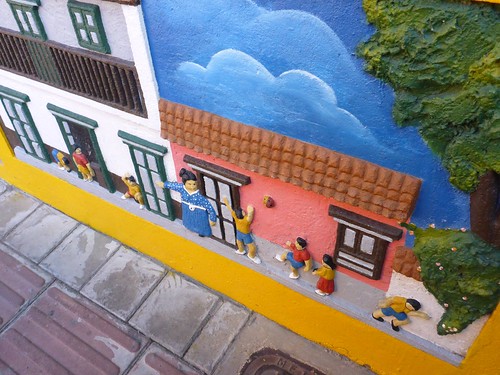
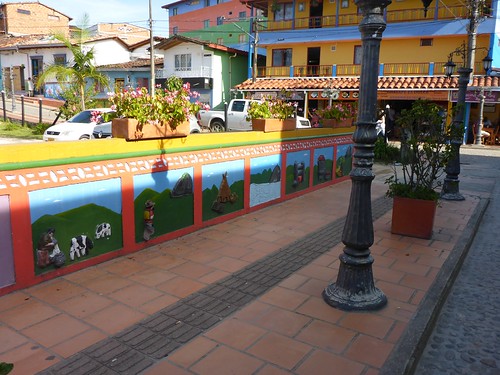
After the huge day, it was time to head back to Medellin… obviously, the bus left an hour later than it was supposed to, thanks to the same group of stragglers holding everyone up. We drove the two hours back and were dropped off at the big square we began at, and then headed back on the metro toward our hostel for some dinner and some well-earned rest.
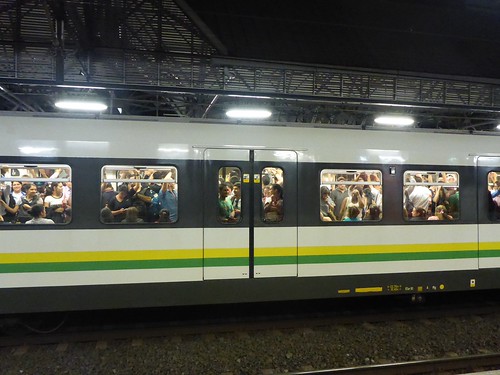
Retracing steps of a drug lord
The locals of Medellin have tried desperately to bury their past, and turn the city into somewhere safe and welcoming for tourists to visit; however it’s dark past is still very present in the city and still affects many of it’s residents. It is also, widely known amongst the locals that tours are run through the city, showing the tourists around Medellin and talking about the destruction that the cartels and Pablo Escobar had caused. We decided to take one of the tours - not the one where Escobar was made out to be a hero and you meet his brother, but one where the tour guide grew up surrounded by the violence and horrific scenes that the cartel had caused.
On Friday morning we had an 8:50 departure time for our Paisa Road tour which left from Wandering Paisa, a hostel a few blocks from the Estadio station, so we headed over there after an early breakfast. We all piled into the van, which was difficult since the seats were closer together than most others (one extra row of seats) and one of the guys was very tall, probably 6’8” or so.
Once inside the van we were thrown into the world of the Medellin drug cartel, we were told about Escobar as a child and how he came to be one of the biggest names in the cocaine industry. Our driver and our guide both grew up in Medellin and were children when many of the major destructive events happened, both had friends killed in roadside bombings, family killed as a result of random shootings and lives filled with the fear of not seeing tomorrow. The television show ‘Narcos’ really glorifies what was a terrifying time in Colombia’s history.
We started off with a quick rundown of Escobar’s childhood… a seemingly normal child, who dropped out of school when he was 14 and got involved in “the wrong crowd” early on, starting his criminal career by stealing headstones from graveyards to re-sell. This spiralled into him making money by selling drugs and eventually leading into him being one of the many leaders of the Medellin cartel. We stopped off at one of Escobar’s apartment blocks, which he built across the road from an exclusive country club that denied him membership. The building is twelve storeys tall and currently empty, covered in bullet holes and guarded by security employed by the government. It was tall enough that it was the only thing the country club (who had denied Escobar membership) could see from their grand bay windows.
After seeing one of the many places Escobar owned and lived in we wound up in the bar area of town to see another. The apartment blocks and houses are now government property, but due to the political situations going on in Colombia, no one can decide which government department owns the houses, who should sell them, and most importantly (to the government) who should get the money from the sales. With the amount of homelessness apparent in Medellin it is sad to see mansions and apartment blocks completely empty, and guarded by paid government officials, instead of being used for more useful purposes, like government housing. It was made very evident through the entirety of our tour that the government is trying to help people, but doesn’t have the means to make the help available to all people.
Although the local Medellin cartel was bad, a lot of the problems were due to the conflict between the Medellin and Cali cartels, and the fight with the government. The big eruption of violence in Medellin started when the Cali cartel bombed a building owned by the Medellin cartel. Retaliation soon followed, and the two cartels (and some smaller ones) were bombing each other’s cities, and sending “Sicarios” on the streets. The Sicarios were drive-by shooters who carried pillions on a motorbike, and when the government out-lawed male pillion passengers, they just responded by giving women the guns. When the police attempted to stop the cartels, they just became involved in the violence - police stations were bombed. The police and government weren’t really the good guys in this whole situation either, at one point they were tired of trying to kill the cartel leaders, so they sent a squad to a small playground and massacred the cartel leaders’ children.
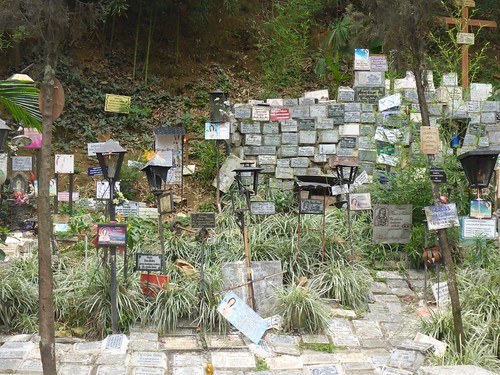
After a short stop at a memorial for the Virgin Mary, where people believe that miracles happen, we had a twenty-minute break for coffee and brunch. A few questions were aired in our bus about the legitimacy of the show ‘Narcos’ on Netflix, and how close it was to the reality of Colombia in the height of the cartels. Unfortunately, because of the way that television shows are, Narcos has minimal resemblance to the reality of the cartels in Medellin and Cali… Escobar did not build schools, he did not take from the rich and give to the poor, he was not a Robin Hood-esque kind of person; he “helped” people out by either letting himself or his band of followers lend people money or let them get into huge drug debts. This debt resulted in many murders, not of the person with the debt, but their family, friends and associates. Hearing some of the terror first hand completely changed our view of Colombia, the people are not proud of their history, but they are proud of their country.
Escobar had poured money into having some things built in Medellin, but only to make himself out to look like a good guy… he was doing this because he wanted to be a member of the government. When hearing this we were a little confused, surely this man didn’t want to have anything to do with the government and politics? The reasoning? Colombia had a special extradition treaty with the U.S. where drug producers and traffickers could be extradited for trial and prison there, even if they have never been in the US nor directly had criminal business there - and members of the Colombian congress are immune to extradition.
At some stage in all of this, Escobar was convinced by the government to surrender stop all of his criminal activity; in return he would get preferential treatment and a reduced jail sentence. At this point the law about extraditing Colombian citizens to the U.S. had been changed, probably with some fairly heavy influence from Escobar and a few of the other drug lords at the time. So Escobar went to prison, and instead of going to one of the public prisons, he was allowed to build his own “prison” and pretty much stayed under house arrest; with a Jacuzzi, a football field and a waterfall amongst other luxurious items.
After our break we moved onto the next sight, the house where Escobar was killed. The house itself belonged to an aunt of Escobar, he apparently was sitting down for a late breakfast of noodles when the authorities had closed in on the house and a gunfight ensued. It is unclear as to whether Escobar shot himself, it was a bullet from one of the government authorities, the US DEA, or one of the “Pepis” (Cali cartels grass-roots anti-Escobar group) that killed him. Unfortunately, for Medellin, Escobar’s death didn’t really effect the distribution of cocaine at all. He was after all just one of many members of the cartel. The house itself has had an extra storey added to it, and looks like any other house on the street, it looks like people live there but we were unsure.
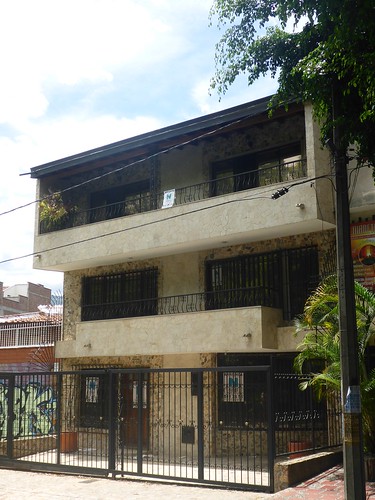
After seeing the house, we made our way across to the other side of Medellin where the cemetery is, and where Escobar and his family are buried. Most of the graves in the cemetery are very plain, there are headstones on a few but they aren’t decorated in anyway… except for Escobar and his family’s graves. They have big headstones, surrounded by palm trees and covered with marble.
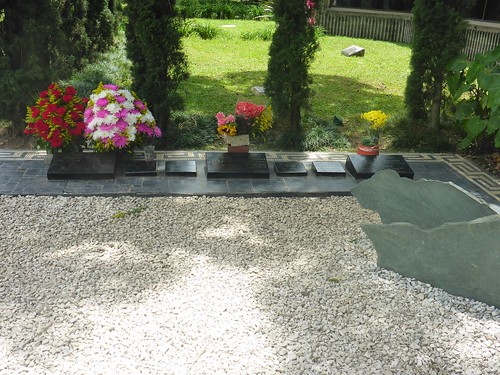
The tour ended near the Itagüi shopping centre and station, so a few of us got off rather than be dropped back at the hostels. The food court there was average, but we were hungry so we grabbed some food, and then caught the train back towards the city for the next tour.
Seeing Medellin from a local’s perspective
With our brains full of information already, what better than to try to cram even more information in by doing another one? This time it was the Real City tour, which was actually difficult to book - you need to book it online (despite being “free”), and they only open bookings up one and a half days in advance. When we arrived at the meeting point at the train station, it was a bit of chaos. They had four different guides, taking 35 people each, which is a lot for one tour.
We started out by walking to the state parliament, which was convenient since we needed to get our photo for Tristan’s challenge. We were told a bit about how this is the administrative centre of Medellin and Antioquia, but it wasn’t that interesting. We then went for a walk along some streets, being told about how the government was changing old buildings previously used by drug cartels into useful places, for example the government department in charge of education. As we learnt that morning, that seems only to have been if the government departments weren’t arguing. Shortly after this, we found ourselves in what used to be a square, a dangerous square, where black market and stolen goods were sold, and deals done. The government has a program called “democratic architecture” with the plan to turn bad places into good places, so they have installed around 150 high light poles into the square, which makes for a cool sight if you look up.
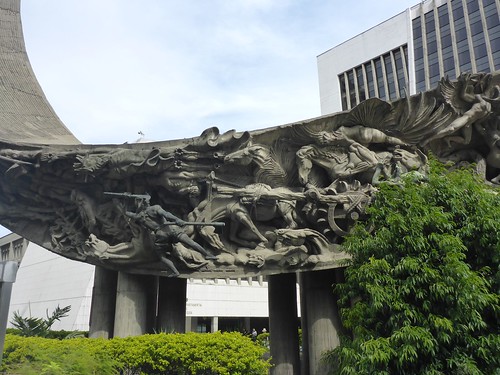
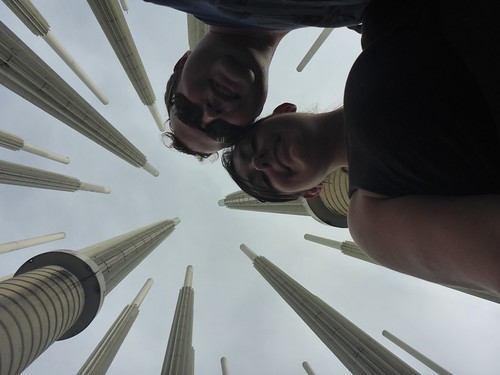
The next stop was the old court buildings, which have been turned into a shopping centre. The coffee shop at the bottom has an interesting sign which roughly translates as “One coffee: $4. One coffee please: $3. Hello, one coffee please: $2. Good morning, how are you? One coffee please: $1”.
Colombia has an artist called Botero who is famous for making sculptures and paintings with over-weight people in them. Close to the centre of Medellin, there are a lot of replicas of them. As usual, it’s considered lucky to rub the sculptures in various places - so the genetalia and breasts are well worn!
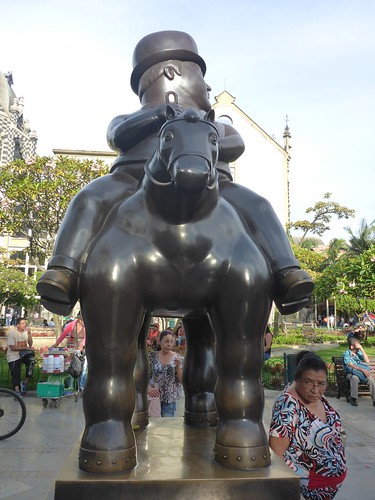
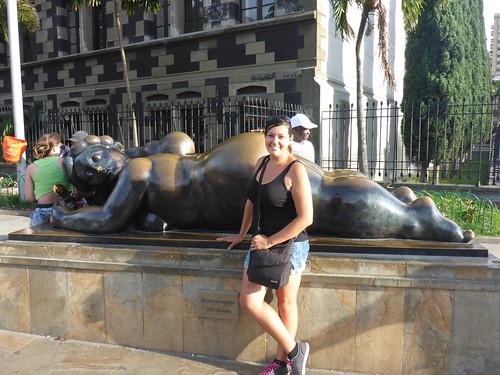
The end of the tour was at another plaza, which has been often used by government announcements, small concerts and other events. Botero has a few sculptures here, including one of a (fat) bird. In 1995, drug cartels placed a bomb under the statue which went off during a youth concert, partially destroying the sculpture and killing 20-30 people. As part of the clean-up, the mayor of Medellin said the sculpture was going to be removed, and he then received an angry call from Botero saying he should not remove it since people would forget what happened. Instead, Botero created another bird sculpture, so that the damaged one would have a friend to talk to.
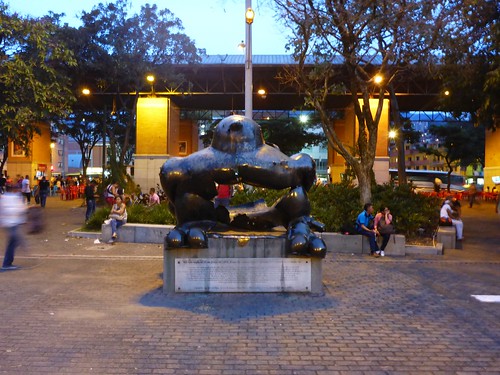
With the tour over, everyone started heading off after giving a tip to the guide. With 35 of us in the group, and them doing 12 tours a week, I think that those guides must make a fair bit of money!
Back at the hostel, we had a fairly simple dinner, chorizo and morcilla stew, which we ended up sharing with the staff at the hostel as we had far too much to eat by ourselves. The night ended fairly early, we were both exhausted and needed to process the mass of information we’d received during the day.
Being a tourist… oops there was some beer
After a brief time at the hostel in the morning, we headed over to El Poblado (where many of the city’s hostels are) to take a look around and go to the Bogota Brewing Company pub. Since it was early, we went to a café for a quick coffee (and delicious apple pie).
Unfortunately, when we arrived at BBC they weren’t quite open yet, so we went to Medellin Beer Factory, which had a few of their own brews and many imported ones. Unfortunately their beers were fairly average so we only had one each, and all the reviews on Trip Advisor said how bad their food was, so we went elsewhere. Next up we went down the road to a fairly swanky looking place, which had a good cocktail selection, and a great gin one - eight types of gin and six types of tonic! James had a Hendricks with 1724 tonic water from Chile, while Dee had a red wine and rum mojito. The mojito was quite good, and you couldn’t taste the alcohol too much. We also grabbed a delicious nacho-type thing in a hot pan with corn chips on the side, for a small lunch. This was turning into a bit of a pub crawl, and the Hendricks may have been prophetic for later.
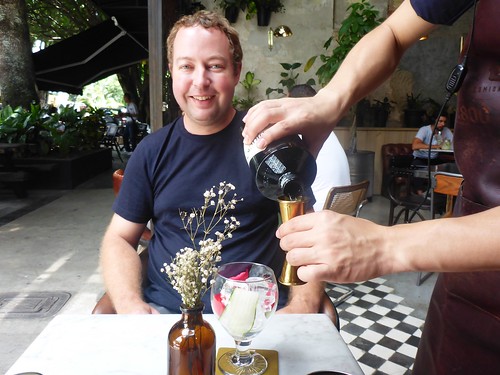
Finally it was time to head over to BBC where we had a couple of beers. There were some interesting quotes on the walls, one near us was from a few centuries ago in Germany: “He who drinks beers sleeps well, he who sleeps well does not sin, he who does not sin goes to heaven, amen.”
Next stop was Barbas, where we had some more drinks, and a bit of food for a dinner-ish snack. As we left, we discovered something very strange in the street. It was an open-side cart thing with bicycle seats on the sides, a front seat with a steering wheel, and a Hendricks logo. A bicycle-powered street cart bar that served gin! Even better, it was free - so we boarded and got peddling to go around the block while the bartender told us about Hendricks (which has only recently become available in Colombia), and serving us a small gin and tonic with each person getting a different one of the Hendricks flavours, in it. Dee got juniper berries and James got red peppercorns. As we left, we also got given a cucumber and gin icy pole!
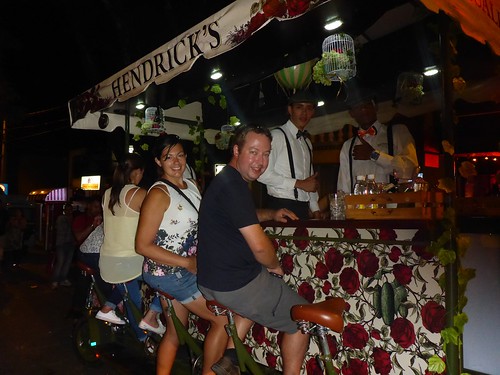
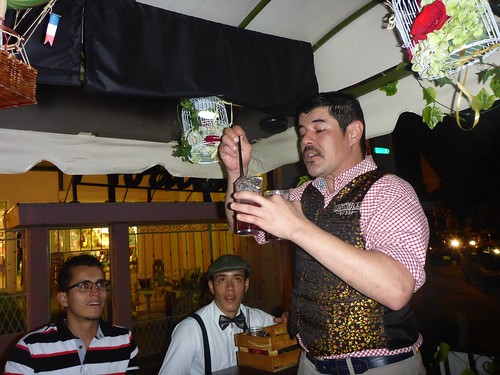
When it was time to hop off they bike we were dropped at a different bar to where we started, so we went in for a two-for-one cocktail, which was okay. As our final stop before heading home we stopped for a beer at a bar we don’t remember the name of. They had about 15 beers on the menu, so we ordered one we had never tried before - Buckler. Unfortunately that turned out to be alcohol-free beers; who even makes that?!?
Heading back to the hostel, we managed to get to the train station, change train lines and get home, although we did leave our free Hendricks cups at the last bar. Safe to say we were pretty munted at this point and we needed to go to bed…
Seeing something other than beer…
Sunday morning we were feeling fairly average, but we had things to do and all sorts of sights to see! It was time to continue our tour of South America’s telefericos. We caught the B line train to San Antonio, then the A line train to Avecedo station where the K line teleferico starts. It goes to three stations the last being Santo Domingo, where you can change to the L line cable car, which is not public transport but goes up to Parque Arvi. This all sounds very complicated but is actually quite easy! The telefericos were put in to help bridge the socio-economic gap amongst the locals, making public transport quite affordable and easy.
The L line goes up in altitude very quickly, and then has a large horizontal section to get to the other side of the park where the buildings are. We weren’t sure what was in the park, and if you could go look around - all we could find was a small market. There was the usual collection of fruit, juices, snacks, knick-knacks, but also a beer stall for “Son del Barril” (established 2016), and a permanent barbecued mushroom hut, which had several types of Santisima beer, unfortunately they had run out of the Shitake mushroom flavour. It’s funny when you hear an Australian accent out of the blue… we hadn’t met any Australians for quite a while, we also underestimated how bogan our accents can sound at times. A voice from behind us demonstrated the boganness beautifully, “Oi mate!!! Check this shit out!!! They have chocolate and strawberries with marshmallows!”. Safe to say, you can hear an Aussie accent from a mile away! For the rest of the afternoon we hung around the Estadio area, watching the locals and enjoying some of the sunshine Medellin was offering.
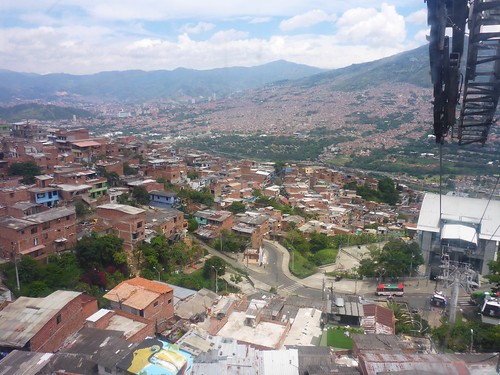
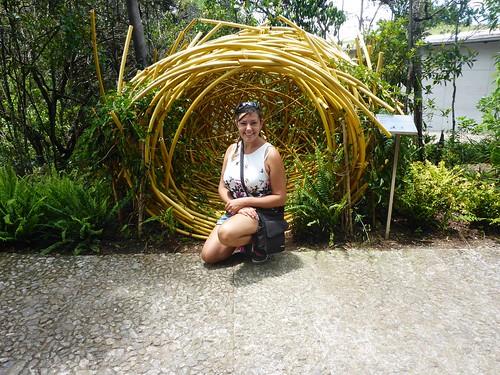
Seeing the last little bits of Medellin
It was safe to say that by Monday, we were both pretty exhausted… we’d seen quite a number of sights around Medellin, and the following day was our next travel day. We felt it was time to probably catch up on a few of our admin tasks, and make sure that we were ready for our flight. These tasks included laundry (hooray for having to adult again!), we both hate having to organise laundry, and in many places the lack of water pressure, warm water and washing machines has made laundry more difficult. The lack of sunshine and clotheslines also hasn’t helped much! We eventually got the laundry organised, however, we could only pick up the laundry after our checkout time the following morning - not an ideal situation but had to be done.
After the laundry drama doing other menial tasks was off the cards, we decided to head into the downtown area instead to have a look around and get some extra photos of things we’d missed on our walking tour. We did some shopping (James even bought a shirt!) and then decided to grab ourselves some lunch at a place called Hacienda - steaks on the menu for both of us! After lunch we were planning to go to the Hellriegel brewery near Estadio on the way home, but after getting there we found out it was closed on Mondays, so we had a few 3 Cordilleras beers at El Buho again. The “rosé” beer was terrible, not a nice savoury flavour but very sweet red fruit. We decided to try a few of the beers there just to make sure we knew what they tasted like.
Travel days :(
Living out of a backpack isn’t too difficult when you have the opportunity to unpack your bags and live like a normal person for a little bit… unfortunately, when you do that it also means that you have to repack the bags at some point. Both of us are getting a little tired of packing, but that’s part of the fun of travelling… it was also the morning that we had to run to the laundry to try and get our clothes back before checkout.
We finally got our stuff together and packed, got ourselves to the airport and settled in to the BBC bar while we waited for our flight. Next destination: Cartagena de Indias!
Go see all the photos from Medellin
